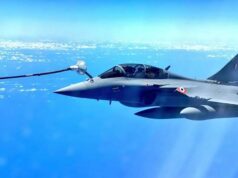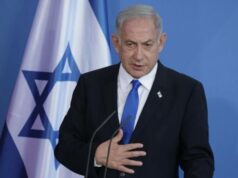The lackadaisical attitude of Indian Police Service officers leading central armed forces is a key reason why training is accorded low priority.
That the Pulwama attack of February 14 was the result of an intelligence failure is not in doubt. The scale of the tragedy, however, was also down to the lack of proper training of the Central Reserve Police Force personnel. Rajnish Rai, inspector general of the paramilitary force, appears to have confirmed as much.
According to news reports, Rai has written several letters to the CRPF headquarters, complaining about the lack of infrastructure at the three prestigious “Counter Insurgency and Anti Terrorism Schools”, one of which, in Shivpuri, Madhya Pradesh, has been in existence for nearly a decade.
This is quite alarming given the CRPF is mandated to fight internal security challenges and is at the vanguard of the counterinsurgency operations in Kashmir, Central India and the North East.
Yet, in spite of repeated failures in Kashmir and the Maoist heartland, the CRPF’s leadership has failed to remedy the situation.
In fact, the standard and orientation of training for all central armed forces has steadily deteriorated over the years despite well-conceived training structures being in place. There are training institutions catering to the requirements at force and zonal levels as well as the system of company collective training at the unit level.
While the lack of infrastructure as noted by Rai may indeed be a problem, repeated setbacks during counterinsurgency operations point to a systemic failure and the leadership’s inability to comprehend the training needs, analyse performance gaps and take remedial measures.
The lackadaisical attitude of Indian Police Service officers leading the central forces – the CRPF chief is from the IPS – is a key reason why training is accorded low priority.
Seeped in police culture, they consider posting to a training centre punishment, and see training as a peripheral activity, leading to this sorry state of affairs.
My own experience in the Border Security Force is that it is a rare IPS leader who comprehends the necessity of good training for success of operations.
In fact, the post of Inspector General for Training, responsible for formulating training policies, was treated as an ornamental position for officers nearing retirement or to facilitate those who needed to get an accommodation in Delhi before moving on to the North East or Kashmir, entitling them to keep the place.
Archaic training programmes
There has been no investment in research and upgradation of training methodology and literature.
Surprisingly, until about a decade ago, the Border Security Force did not even have training literature on strategic and operational aspects of border management.
The reference material prepared in 2008-’09 has not been upgraded in spite of several changes in the operational environment like the signing of the Indo-Bangladesh Border Agreement, introduction of the “Less Lethal Strategy” – even though a “faculty of studies” and the Institute of Border Management Studies have been in existence for long.
Security forces stand guard near the site of the Pulwama attack.
The training programmes remain archaic and in urgent need of upgradation to align with the needs of modern-day operational environment.
So, we need to study the methodology of operating against militants in prevailing conditions in Kashmir or the Maoist areas, not for fighting insurgency in the jungle terrain.
Similarly, we have not been able to grasp the philosophy of the management of fenced borders and, hence, have been unable to evolve a training methodology for that.
Rai’s letters confirm my apprehension that the state of training in the CRPF is similar.
Another reason for the dilution in the standards of training is the rapid expansion of the central forces over the past few years, putting a heavy burden on infrastructure and staff, weakening supervision and leading to adverse trainer-trainee ratios. But this situation should improve as force levels stabilise.
Poor response of troops in quick timeframes leading to heavy causalities is also a result of the total breakdown of the company collective training system.
Though each company of the central armed forces is required to undergo this training once a year, they are rarely, if at all, available. They are deployed round the year for some or the other duty, including to provide security during elections.
One can understand the compulsion to use the central forces for Assembly or parliamentary polls, but they are routinely deployed for even panchayat elections.
Nearly 400 companies of the central forces requisitioned for last year’s panchayat elections in Kashmir continue to be deployed there. They are not likely to be released until the parliamentary polls and the yet to be announced Assembly elections are over.
The central forces have an important role in the security matrix of the country. They are mandated to guard borders, handle internal security challenges and assist the defence forces in the eventuality of war. The lack of quality training will play havoc with their operational efficiency, seriously compromising national security. Their leaders must take immediate steps to remedy the situation.



